Themed collection Materials Chemistry in Xi’an Jiaotong University

Introduction to materials chemistry at Xi’an Jiaotong University
Dongfeng Dang, Yanfeng Zhang, Shujiang Ding and Zhicheng Zhang introduce the Materials Chemistry Frontiers themed collection on materials chemistry research at Xi’an Jiaotong University.

Mater. Chem. Front., 2022,6, 126-127
https://doi.org/10.1039/D1QM90082J
Cross-linked polymers based on B–O bonds: synthesis, structure and properties
Research progress of boron-containing crosslinked polymers with different structures and functions is summarized, and the crosslinking structure, pyrolysis mechanism and exchange mechanism of cross-linked polymers based on B–O bonds are highlighted.
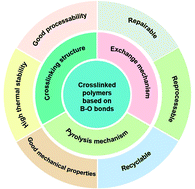
Mater. Chem. Front., 2021,5, 5534-5548
https://doi.org/10.1039/D1QM00514F
MicroRNA-5106-based nanodelivery to enhance osteogenic differentiation and bone regeneration of bone mesenchymal stem cells through targeting of Gsk-3α
This work reports the intracellular delivery of miRNA-5106 into stem cells. The intracellular delivery could efficiently enhance the osteogenic differentiation and in vivo bone regeneration through the targeting the Gsk-3α signaling pathway.

Mater. Chem. Front., 2021,5, 8138-8150
https://doi.org/10.1039/D1QM00367D
Facile fabrication of flexible concave microlens arrays with a well-controlled curvature
Flexible concave microlens arrays with a well-controlled curvature can be fabricated straightforwardly using a leaky dielectric via the electrowetting-on-dielectrics phenomenon for potential miniaturized and high-performance flexible optical micro-devices.
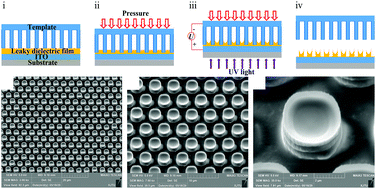
Mater. Chem. Front., 2021,5, 7759-7766
https://doi.org/10.1039/D1QM00519G
Highly efficient solution-processed pure yellow OLEDs based on dinuclear Pt(II) complexes
Two efficient dinuclear Pt(II) complexes SO-DPt and AB-DPt were developed by employing diphenylsulfone and arylboron groups. The resultant emitters exhibited pure yellow electroluminescence in solution-processed OLEDs with EQEs exceeding 21%.
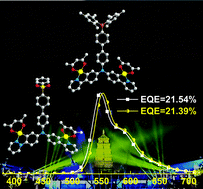
Mater. Chem. Front., 2021,5, 5698-5705
https://doi.org/10.1039/D1QM00507C
Hydrogen bond reinforced, transparent polycaprolactone-based degradable polyurethane
Reinforced and toughened polyurethane film for post-operative anti-adhesion.
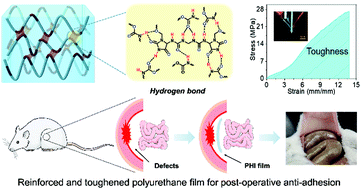
Mater. Chem. Front., 2021,5, 5371-5381
https://doi.org/10.1039/D1QM00476J
A CoSe2-based 3D conductive network for high-performance potassium storage: enhancing charge transportation by encapsulation and restriction strategy
The 3D conductive network improves electronic conductivity, and the gap between graphene layers avoids spalling, showing excellent potassium storage performance.
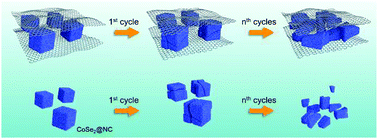
Mater. Chem. Front., 2021,5, 5351-5360
https://doi.org/10.1039/D1QM00362C
A novel fluorous effect induced fluorescence sensor for Cu(II) detection in the organic phase with high sensitivity
P(VDF–ATrFE) with excellent performance is employed as a fluorescent probe for Cu ion detection in the organic phase directly.

Mater. Chem. Front., 2021,5, 5361-5370
https://doi.org/10.1039/D1QM00307K
A hydrogen evolution catalyst lowering energy consumption in aluminum anodization
Aluminum anodization process requires a lot of electrical energy for the migration of ions in a barrier-type oxide film, in which electrode polarization leads to massive energy consumption.
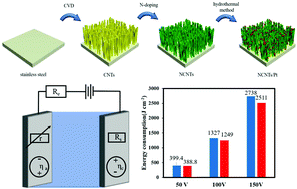
Inorg. Chem. Front., 2021,8, 3284-3291
https://doi.org/10.1039/D1QI00377A
Mono-, di- and tri-nuclear PtII(C^N)(N-donor ligand)Cl complexes showing aggregation-induced phosphorescent emission (AIPE) behavior for efficient solution-processed organic light-emitting devices
Mono-, di- and tri-nuclear PtII(C^N)(N-donor ligand)Cl complexes Ph-PAYPt1, Ph-PAYPt2 and Ph-PAYPt3 are designed and prepared.
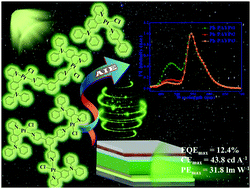
Mater. Chem. Front., 2021,5, 4160-4173
https://doi.org/10.1039/D1QM00172H
AIE-active 9,10-azaboraphenanthrene-containing viologens for reversible electrochromic and electrofluorochromic applications
A series of novel AIE-active 9,10-azaboraphenanthrene-containing viologens (BNPV2+) for electrochromism, electrofluorochromism and reversible data encryption system is reported.
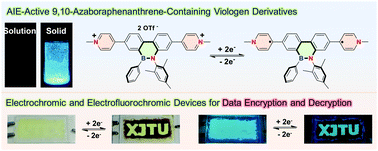
Mater. Chem. Front., 2021,5, 4128-4137
https://doi.org/10.1039/D1QM00327E
Boosting the AIEgen-based photo-theranostic platform by balancing radiative decay and non-radiative decay
A single-molecule-triggered photo-theranostic platform with aggregation-induced emission feature for precise diagnosis and efficient cancer therapy is developed.
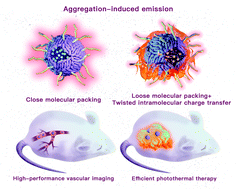
Mater. Chem. Front., 2021,5, 4182-4192
https://doi.org/10.1039/D0QM01035A
The ultrahigh discharge efficiency and energy density of P(VDF-HFP) via electrospinning-hot press with St-MMA copolymer
Flory–Huggins theory combined with experimental tests and phase-field simulation proves that electrospinning improves the homogeneity and Eb in composite films, and MS can limit the ferroelectric relaxation of PVDF and significantly increase Ue and η.
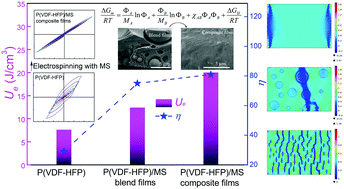
Mater. Chem. Front., 2021,5, 3646-3656
https://doi.org/10.1039/D1QM00105A
Morphology control on fluorescent metallacycle-cored supramolecular polymers
Fluorescent supramolecular polymers were successfully prepared by linkage of hexagonal metallacycles via the thiol–ene click reaction. The morphology of the polymers was finely regulated by the length of the linkers and the solvents.

Mater. Chem. Front., 2021,5, 3710-3716
https://doi.org/10.1039/D1QM00265A
An easily synthesized AIE luminogen for lipid droplet-specific super-resolution imaging and two-photon imaging
A synergetic imaging platform was established to achieve LDs-specific imaging by STED nanoscopy and TPF microscopy. Benefiting from its high PLQYs, outstanding photo-stability, and high LDs specificity, a superior resolution in cells and a deep penetration depth in tissues were achieved.
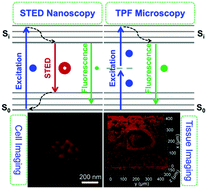
Mater. Chem. Front., 2021,5, 1872-1883
https://doi.org/10.1039/D0QM00682C
Two-dimensional semiconducting Cs(I)/Bi(III) bimetallic iodide hybrids for light detection
Two new 2D semiconducting Cs/Bi hybrid compounds are reported here with evident photocurrent responses.
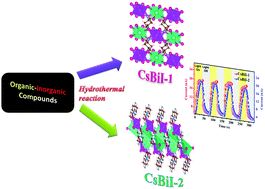
Mater. Chem. Front., 2021,5, 973-978
https://doi.org/10.1039/D0QM00762E
About this collection
Xi’an Jiaotong University is a comprehensive research university with ten major categories of disciplines. Among them, chemistry, materials science, engineering, medicine and other related disciplines contribute to the development of materials chemistry together in Xi’an Jiaotong University. In 2020, School of Chemistry in Xi’an Jiaotong University was found, which further promote the fast development of materials chemistry in the university.
Guest edited by Zhicheng Zhang, Shujiang Ding, Yanfeng Zhang and Dongfeng Dang, this collection highlights the outstanding research and scientists in materials chemistry in Xi’an Jiaotong University.